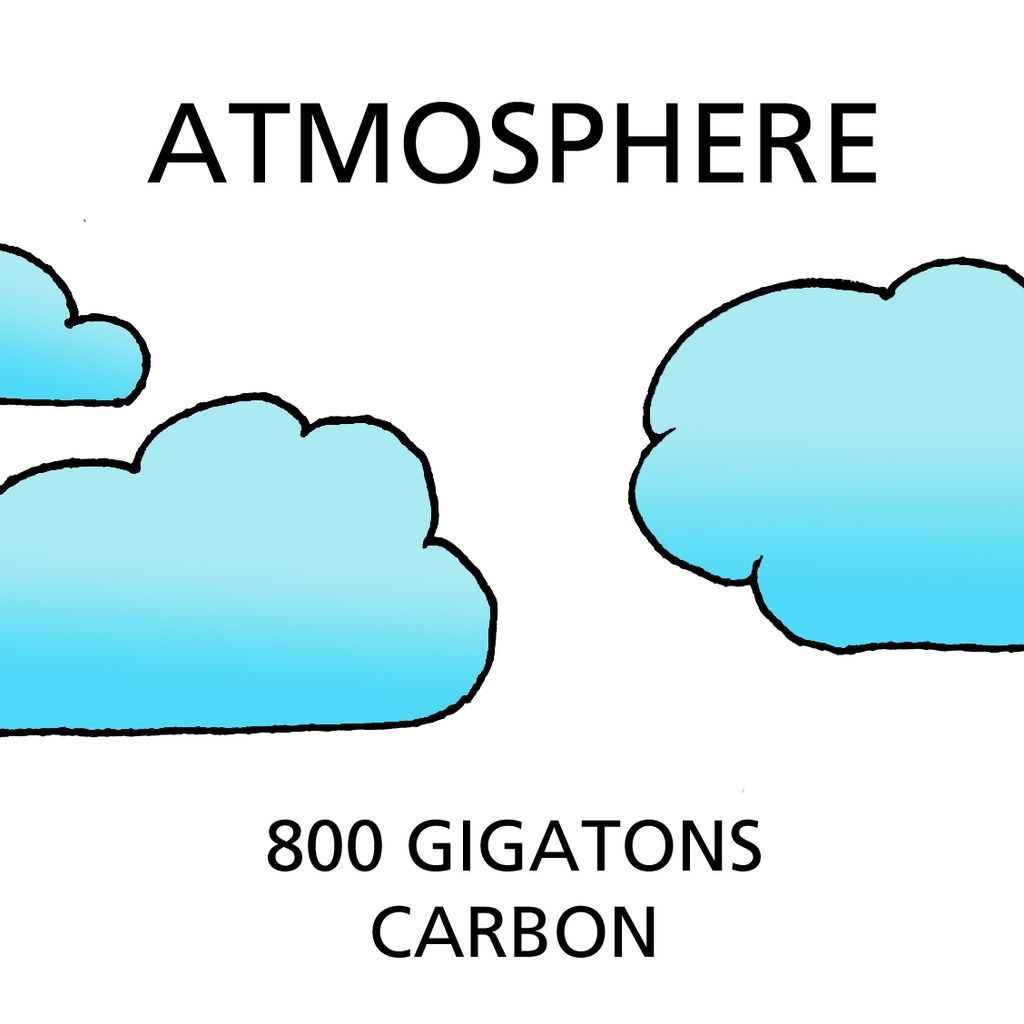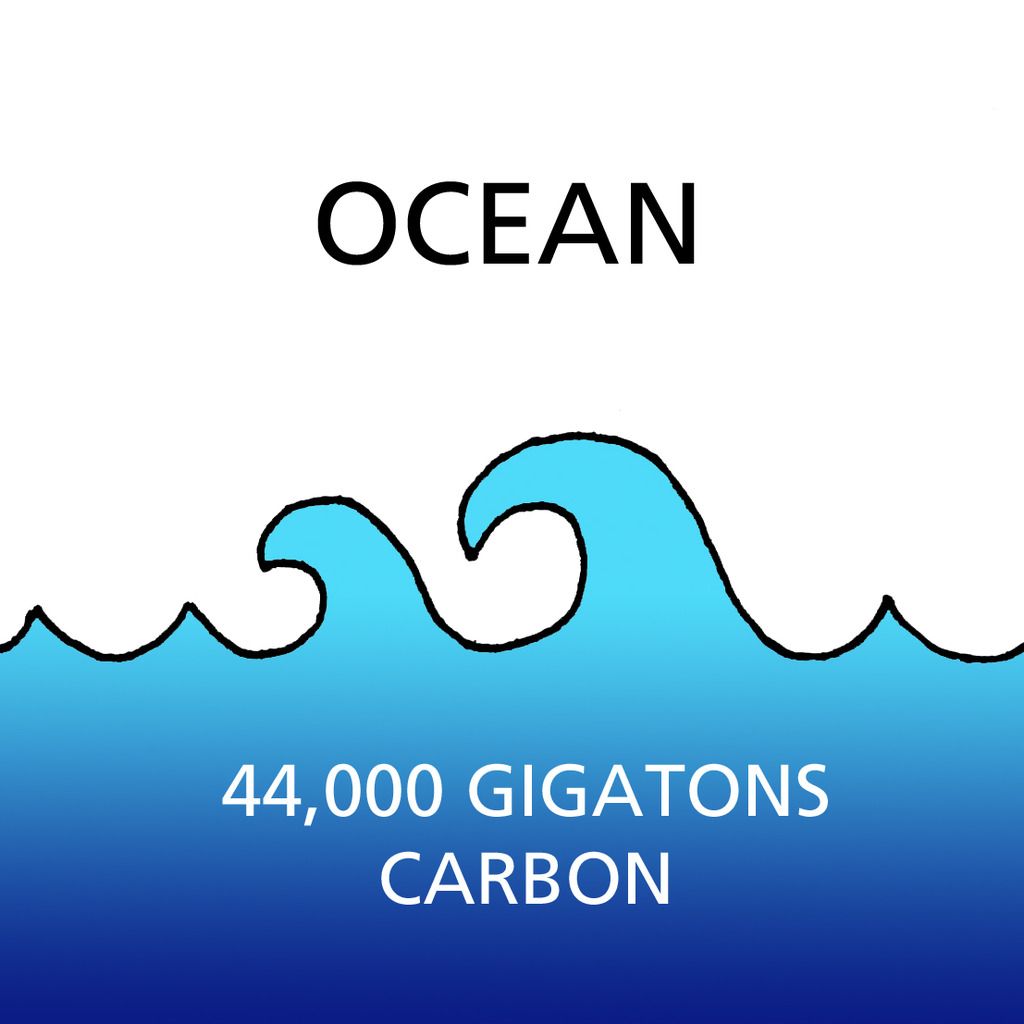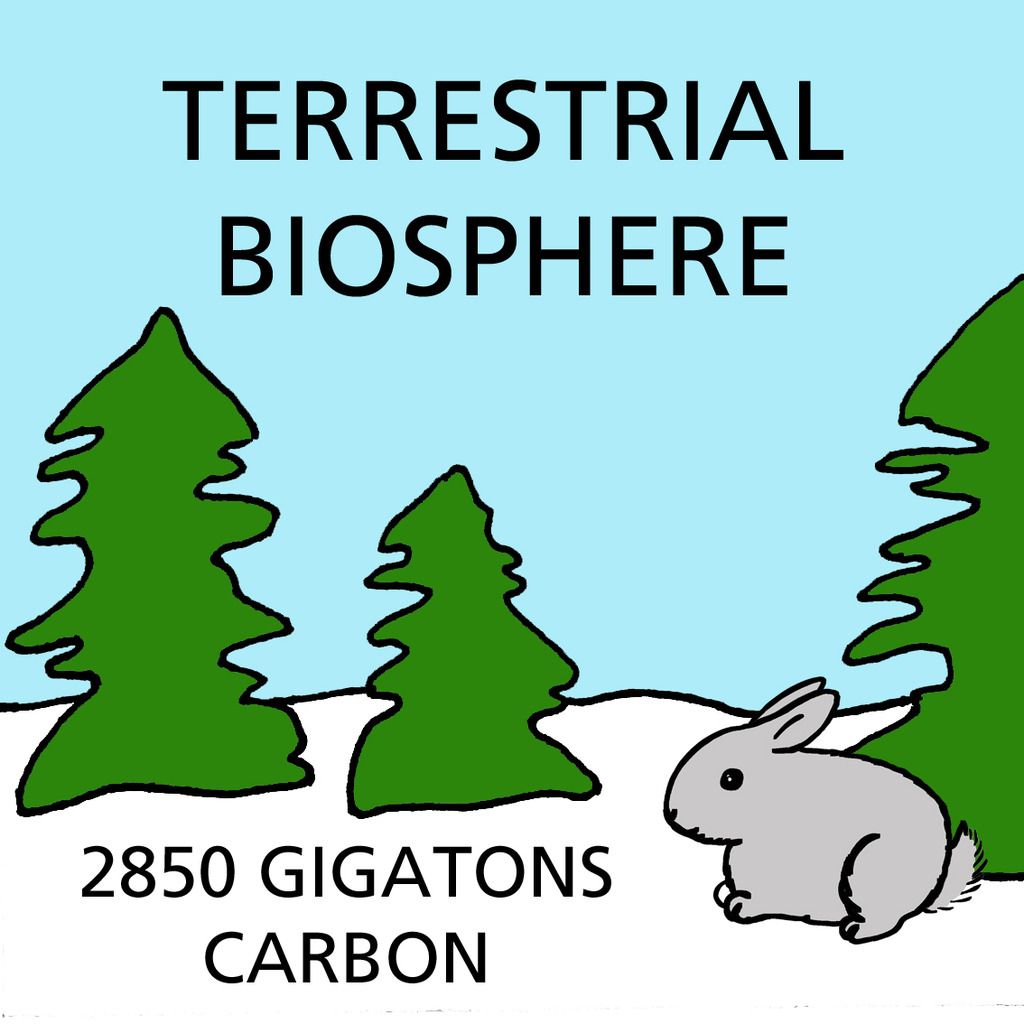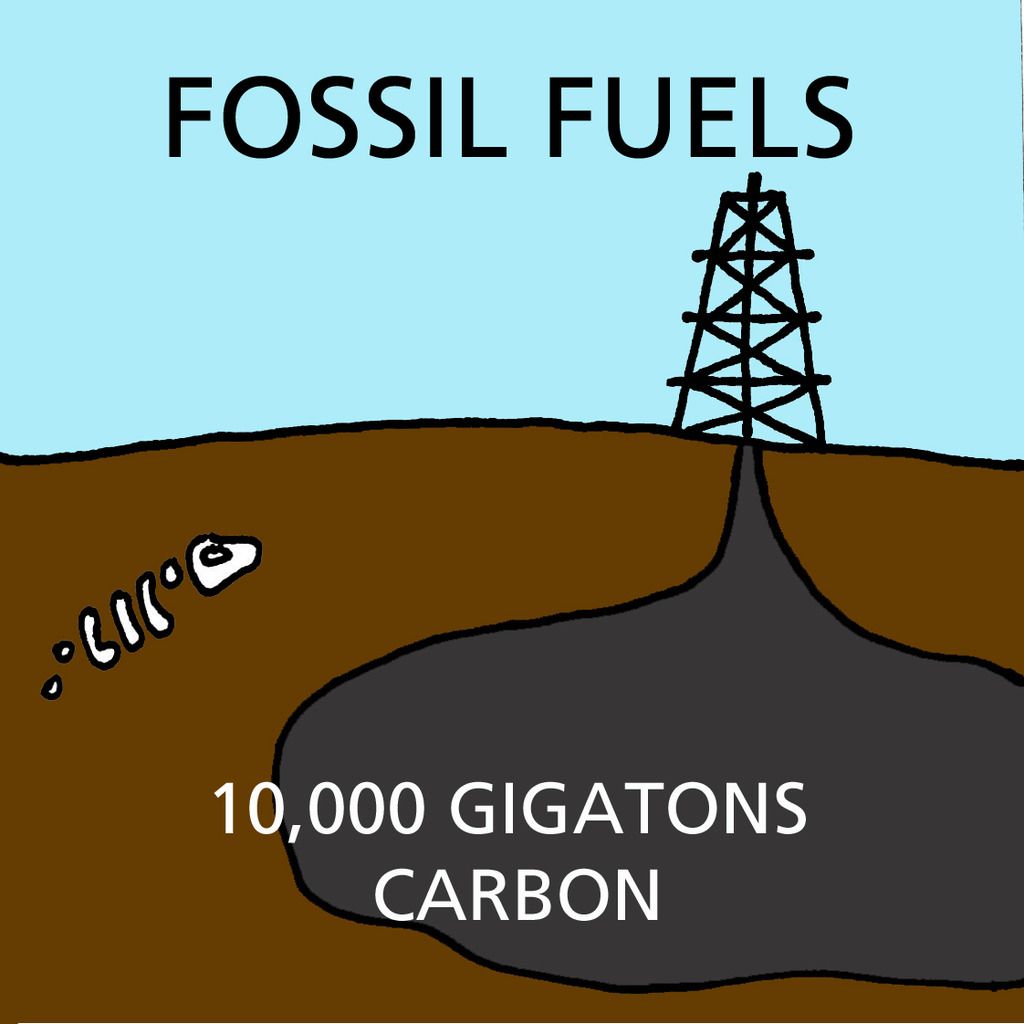| There are four main things that “store” carbon—the atmosphere, the ocean, the terrestrial biosphere, and the Earth itself. These are called carbon sinks, pools or reservoirs, meaning that they store carbon naturally. Of these four major sinks, the atmosphere holds the least amount of carbon—about 800 gigatons. The carbon the atmosphere holds is in the form of gas, including carbon dioxide (CO2), carbon monoxide (CO) and methane (CH4). The atmosphere is very big, so it can hold a lot of gas, but gas is not very dense so there are not as many carbon atoms in the atmosphere. The ocean can hold much more carbon, because carbon in the ocean is usually stored as a solid. The ocean holds about 44,000 gigatons of carbon. This number includes all life forms—algae, plants, and every animal from shrimp to blue whales. It also includes the shells of shell-building organisms such as snails, mussels and oysters, and the remains of all these shells that drift to the ocean floor. Lastly, the ocean also contains some carbon that was once in the air, because carbon dioxide dissolves in water, mixing together to form other chemical compounds. The terrestrial biosphere simply refers to all living things not in the oceans—everything from plants to animals to the tiny microscopic organisms that live in dirt that you can’t even see. The terrestrial biosphere holds about 1,200 gigatons of carbon. Lastly, carbon can be stored in rock. Some rock is pure carbon, such as graphite or diamond. Other rocks are formed from dead life forms; for instance, limestone is formed from the remains of many tiny, crushed or broken shells. Rock holds the most carbon—65 and a half million gigatons (65,500,000 Gt). When a living thing dies, it decomposes. Some of its carbon will go to the atmosphere and some will be consumed by other life forms. However, a lot of it often goes into the ground, where it decomposes further. Over millions and millions, the Earth crushes and compresses these living things such that they change structure, becoming oil, coal, or natural gas. These are known as fossil fuels. 10,000 gigatons of the carbon in rock are in the form of fossil fuels. |    
|